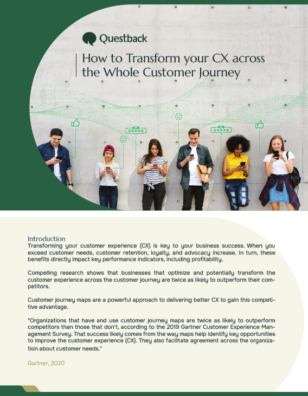How Can You Act if You Don’t Listen?

Almost every conversation our team has with business leaders touches on today’s pace of change. That pace often prompts employers to make quick decisions, but the problem is those are not always made with the right data on hand.
For example, you’re looking for ways to educate your workforce and provide them with the information they need to excel. But you’re using last year’s employee feedback survey as the basis. How do you know those insights are even relevant today?
Additionally, we have inherent psychological biases that affect our decisions. These biases can influence us to make flawed decisions based on extraneous factors like when we heard about the issue versus the actual importance of it. To counter these issues appropriately, organizations need to be more intentional about listening for problems and acting on them.
The Power of Listening + Action
“We have two ears and one mouth so that we can listen twice as much as we speak.”
– Epictetus
The engagement problem in the workplace is one that HR and business leaders know all too well. A significant majority of workers are marginally engaged, if at all, and only a small minority are highly engaged in their work. It’s the workplace equivalent of trying to row a boat by yourself with most of the other rowers either sitting idly or actively paddling against you.
The case for engagement is often a misunderstood one. It never fails. When talking about gathering employee feedback, I inevitably run into individuals that protest, saying, “What if we can’t fix the issue they’re facing?” My response is always, “Well, at least you’ll know what that issue is because right now you’re not certain.”
Whether in work or in life, the answer to any problem is to clearly identify the issue first. And then, determine potential solutions. But employers are sometimes worried to ask about problems when they’re not sure they can deliver the exact, perfect solution their employees desire. This concept was echoed by a piece in Harvard Business Review:
“Organizational teams speed toward a solution, fearing that if they spend too much time defining the problem, their superiors will punish them for taking so long to get to the starting line. Ironically, that approach is more likely to waste time and money and reduce the odds of success than one that strives at the outset to achieve an in-depth understanding of the problem and its importance to the firm.”
This reinforces the notion that action alone isn’t the answer. Jumping ahead and taking the wrong steps could compound the problem, waste resources and create a more change-resistant employee population. Listening plus action, though, can lead to the right action at the right time.
Better Listening Leads to Better Action
If listening and action are intertwined, as highlighted above, then better listening should be correlated with better actions. For leaders looking to take the right steps with a listening program, they need three key components to make it work:
Continuous
Listening can’t be a once-a-year activity. Too many variables change that can affect responses, needs and more. Employers are turning to recurring performance discussions because annual goal-setting is too infrequent—this is in direct parallel with feedback. It must be more frequent to build a good baseline for the needs and concerns of the workforce.
Comprehensive
Some employers have turned to pulse surveys as an alternative to annual feedback mechanisms. However, instead of generating rich, actionable data, they just ask the same question over and over again, which may net only a few superficial responses. Being sure to mix up questions over time can help to shine the light in a variety of problem areas from employee benefits to culture to work environment.
Collaborative
Finally, listening programs must be collaborative. Managers must be in the loop on responses to help take action on requisite issues because often times the issues at hand are within their sphere of influence. Additionally, HR teams need to be open about responses to help create a more transparent culture for their employees. Being open about issues creates trust; trust is shown to increase engagement and performance.
Today’s employees have higher expectations from their leaders than ever before. Taking action without first listening to the needs of the employee population is a great way to create a negative, knee-jerk reaction. One that may create additional issues instead of solving the problem at hand. By taking a careful, well-planned approach to listening for employee needs, organizations can address the right concerns and reinforce a transparent, employee-centric culture.

Customer Journey – Transform your CX
Do you want to create a superb customer journey? Gain a competitive advantage, enjoy greater profitability and deliver a superior customer experience? Download our new whitepaper now!










